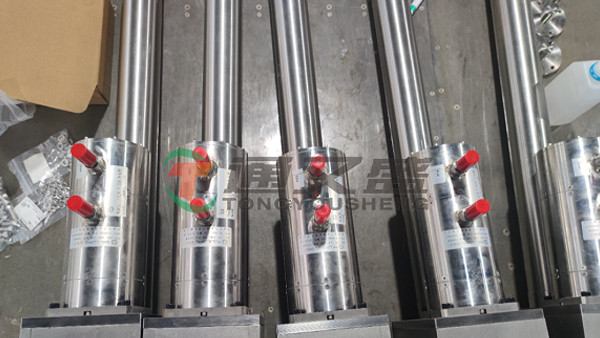The measurement of servo cylinder repeated positioning accuracy usually involves the following steps:
1. Preparation: First of all, ensure that the servo cylinder is installed on a stable platform, and the connected control system is correctly configured to execute precise motion instructions.
2. Set the reference position: select the starting position of a servo cylinder as the reference point, which should be within the entire range of motion of the servo cylinder.
3. Execute motion command: send a series of motion commands through the control system to move the servo cylinder from the reference position to a specified position, and then return to the reference position. This process needs to be repeated several times, and each move should be as close to the predetermined target position as possible.

4. Data acquisition: Each time the servo cylinder reaches the target position, a position sensor (such as an encoder or displacement sensor) is used to read and record the exact position of the servo cylinder. The data will be used for subsequent analysis.
5. Data analysis: The reading of each arrival at the target position is compared with the preset target position to calculate the difference between the actual position and the target position. Repeated positioning accuracy is the statistical result of these differences, usually expressed as standard deviation or root-mean-square error.
6. Evaluation and calibration: According to the analysis results, evaluate whether the repetitive positioning accuracy of the servo cylinder meets the design requirements or application standards. If the repeated positioning accuracy is not high enough, the servo cylinder may need to be calibrated or maintained.
To get more accurate test results, you can take the following steps:
- Test under conditions of stable ambient temperature, as temperature changes may affect the performance of the servo cylinder and sensor.
- Ensure that the servo cylinder drive system, control system and sensors are well maintained and calibrated.
- Minimize external interference such as vibration, electromagnetic interference, etc., during the test.
- If possible, use high-precision sensors and measuring equipment to improve the accuracy of the data.
Through the above steps, the repeated positioning accuracy of the servo cylinder can be effectively measured, and the corresponding optimization and calibration can be carried out accordingly.